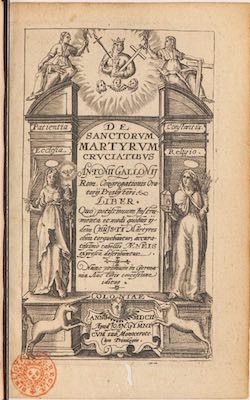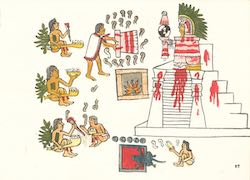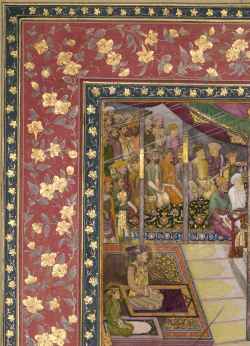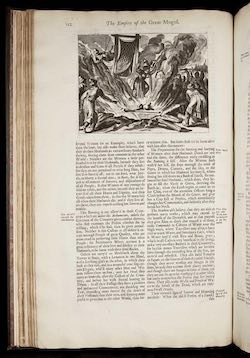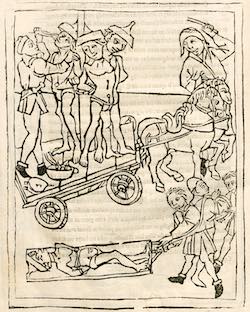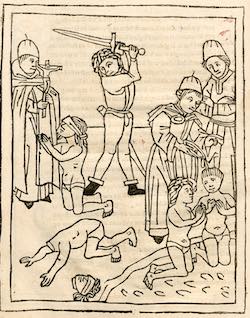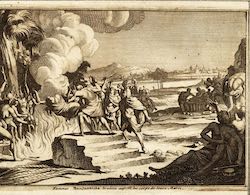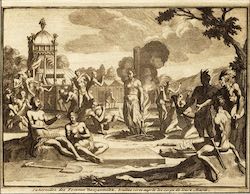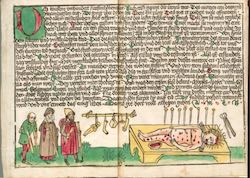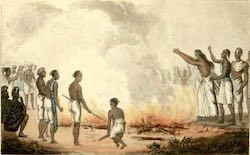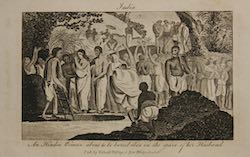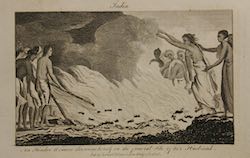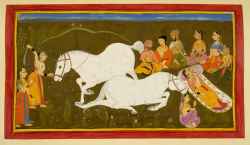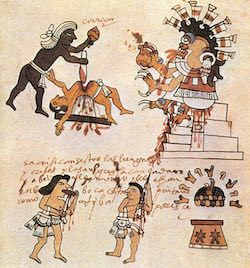Topic: 2. Sacrifice and religion: Comparisons, Antiquarians, Anthropology (16th-18th Century)
Religious sacrifices across various cultures and contexts sparked widespread interest in Early Modern Europe. As Christianity expanded into regions inhabited by "infidels" and "pagans", Europeans encountered a diverse array of sacrificial customs, ranging from the Sati rituals in India to the Aztec sacrifices in the Americas. This cross-cultural exposure captivated a wide audience, including theologians, philosophers, political thinkers, antiquarians, orientalists, missionaries, poets, artists, and even the general public. These encounters broadened the European understanding of sacrifice and led to a critical reassessment of classical and biblical sacrificial rites. This section includes:
- Sources: A selection of early modern printed materials, which include descriptions of the Americas, Asia, and Africa, alongside antiquarian and philological studies on religious sacrifice in classical antiquity and beyond. It also presents early modern works of ethnological observations and the first attempts to compare different sacrificial practices in various traditions and contexts, laying the groundwork for disciplines like the history of religions and anthropology.
- Iconographic Representations: A rich collection of images from the 16th to 18th centuries, illustrating a range of sacrificial rituals and practices as seen in different cultural and geographical contexts.
- Related Bibliography: An extensive bibliography spanning scholarly works from the 19th to 21st centuries, providing contemporary analyses and interpretations of these early studies and observations.
De sanctorum martyrum cruciatibus [frontispice] (1602)
from: A. Gallonio, De sanctorum martyrum cruciatibus. Antonii Gallonii [...] liber [...] nunc primum in Germania [...] editus, Colonia, J. Gymnicum, 1602.
Different Sacrifices in front of a Dirty Pyramid of Blood [1526 - 1550]
from: Codex Magliabecchiano, c. 87r
Biblioteca Nazionale di Firenze, Florence
Emperor Jahangir and Prince Khurram at the gathering for the Feast of the Sacrifice (1615-1625)
from: India
Staatliche Museen zu Berlin, Museum für Islamische Kunst
Empire of Great Mogol (18th century?)
http://www.columbia.edu/itc/mealac/pritchett/00routesdata/1800_1899/hinduism/sati/sati.html
Examination of Simon’s body after its discovery (1475)
from: Historie von Simon zu Trient [Bayerische StaatsBibliothek, 2 Inc.s.a. 62#Beibd], fol. 8v
Bayerische Staatsbibliothek, Munich
Execution of Jews in Trent (1475)
from: Historie von Simon zu Trient [Bayerische StaatsBibliothek, 2 Inc.s.a. 62#Beibd], fol. 10v
Bayerische Staatsbibliothek, Munich
Execution of the baptized Jews in Trent (1475)
from: Historie von Simon zu Trient [Bayerische StaatsBibliothek, 2 Inc.s.a. 62#Beibd], fol. 12v
Bayerische Staatsbibliothek, Munich
Favorite Wife of Sevajee (1851)
http://www.columbia.edu/itc/mealac/pritchett/00routesdata/1800_1899/hinduism/sati/sati.html
Femmes Benjanoises brulees (1725)
from: van der Aa, P. La galerie agreable du monde. Tome premier des Indes Orientales, Leiden, c. 1725
http://www.columbia.edu/itc/mealac/pritchett/00routesdata/1800_1899/hinduism/sati/sati.html
Funerailles des Femmes Benjanoises (1725)
from: van der Aa, P. La galerie agreable du monde. Tome premier des Indes Orientales, Leiden, c. 1725
http://www.columbia.edu/itc/mealac/pritchett/00routesdata/1800_1899/hinduism/sati/sati.html
German broadsheet showing pilgrims visiting the relics of Simon, in a position known as victima. Bound with the account of Matthia Tiberino [description provided by Magda Teter] (1475)
from: Bayerische StaatsBibliothek, Rar. 338
Bayerische Staatsbibliothek, Munich
Giant snake eats a lion while a man is attacked by beasts with sharp teeth. Includes the bodies of other victims or sacrifices. Description of a temple in the Yucatan discovered by Francisco Fernandez de Córdoba and Cristobal Morantes. The temple is described as being a theater of marble with huge figures carved on the top. People were daily executed within the bars and their bodies thrown down on the ground below (1671)
from: Arnoldus Montanus, De Nieuwe en Onbekende Weereld, Amsterdam, Jacob Meurs, 1671, p. 73
John Carter Brown Library
Goods for the Sacrifice during Gacitocoztli Feast [1526 - 1550]
from: Codex Magliabecchiano, c. 32r
Biblioteca Nazionale di Firenze, Florence
Hindoo Widow Burning Herself with the Corpse of the Husband (1820)
from: Shoberl, F. The World in Miniature: Hindoostan, London, Ackerman, 1820s
http://www.columbia.edu/itc/mealac/pritchett/00routesdata/1800_1899/hinduism/sati/sati.html
Hindoo Woman about to be Buried (1811)
from: Goldsmith, J. Geography on a Popular Plan, London, Richard Phillips, 1811
http://www.columbia.edu/itc/mealac/pritchett/00routesdata/1800_1899/hinduism/sati/sati.html
Hindoo Woman throwing herself (19th century?)
http://www.columbia.edu/itc/mealac/pritchett/00routesdata/1800_1899/hinduism/sati/sati.html
Horse sacrifice (Asvamedha) (1712)
from: Ramayana, Bala Kanda, Ms Add. 15295, fol. 33
British Library, London [from Udaipur]

